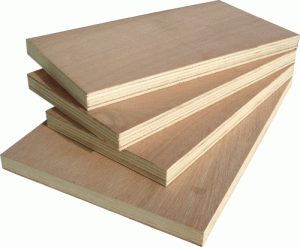How Thick Is Plywood?
Plywood Thickness
 Several readers have asked the question: How Thick is Plywood? I thought it would be useful to go over some of the different thickness plywood available on the market today. Plywood thicknesses vary drastically depending on the type of plywood and the use.
Several readers have asked the question: How Thick is Plywood? I thought it would be useful to go over some of the different thickness plywood available on the market today. Plywood thicknesses vary drastically depending on the type of plywood and the use.
Plywood can be divided into two different groups when it comes to thickness variations. Sanded panels and un-sanded panels.
Sanded Plywood Panels
Sanded plywood panels (often used for flooring, cabinetry and other finished applications) typically range in thickness from 1/4 inch to 1-1/4 inch in 1/8 inch intervals. They are manufactured to a tolerance of 1/64 of an inch up to 3/4 of an inch with thicker panels being +/- 3% of the total. It’s important to remember that the tolerances are from the factory and don’t include changes due to temperature and humidity levels after the plywood leaves the factory.
Un-Sanded Plywood Panels
Un-sanded plywood panels are typically manufactured from 5/16 of an inch up to 1-1/4 inches. The tolerance for un-sanded plywood is 1/32 of an inch up to 13/16 of an inch and +/- 5% for thicker plywood. These panels typically come in thickness ranges of 1/16 of an inch.
Popular Plywood Thicknesses
Quite often you’ll hear someone say they are sheathing their house with half inch plywood. Well the fact is if they are sheathing (most likely un-sanded plywood) then they are most likely using a piece of 15/32 inch thick plywood. Remember the manufacturer has a tolerance of 1/32 of an inch. If you specify three quarter inch sanded plywood then you’ll most likely get a piece that is 47/64 of an inch thick (1/64 of an inch tolerance).
I hope this information helps clear up how thick plywood panels really are. Many people get confused at the lumber yard when all they see is 15/32 (1/2″) plywood, 19/32 (5/8″) plywood or 23/32 (3/4″) plywood.













To add an additional point… There are specific undersized router bits that correspond with plywood thicknesses. Also setup your dado stack for the smaller thickness but realize some slight shimming may be necessary (and then an additional pass) to get the fit perfect.
You are absolutely correct. For those trying to get a “tight” fit on dado joints the router diameter is crucial.
You guys are awesome to offer this guide. I work at Home Depot and my conversion chart went missing. You’re a lifesaver
THANKS!!